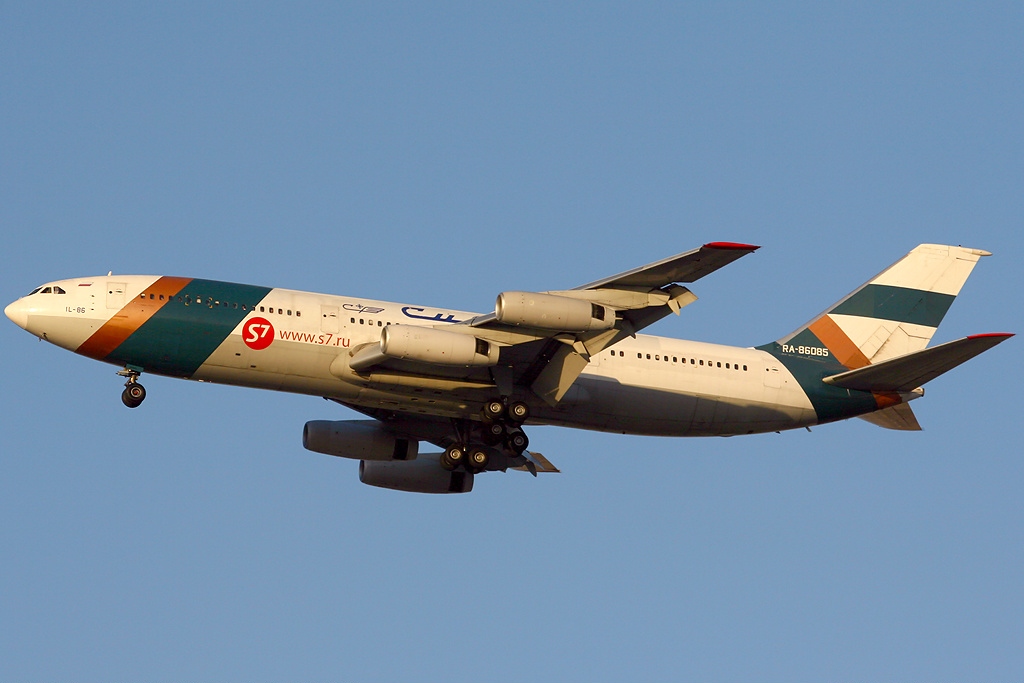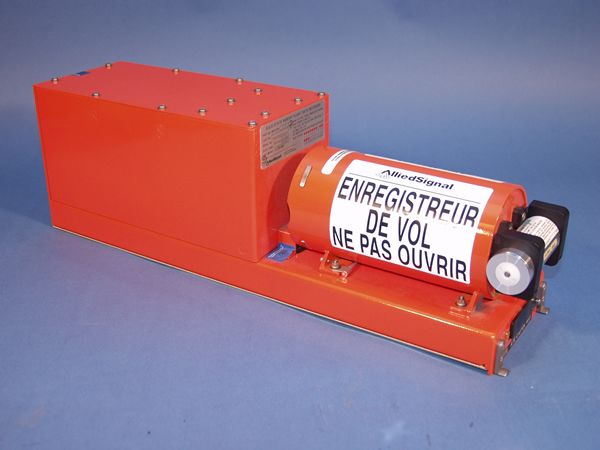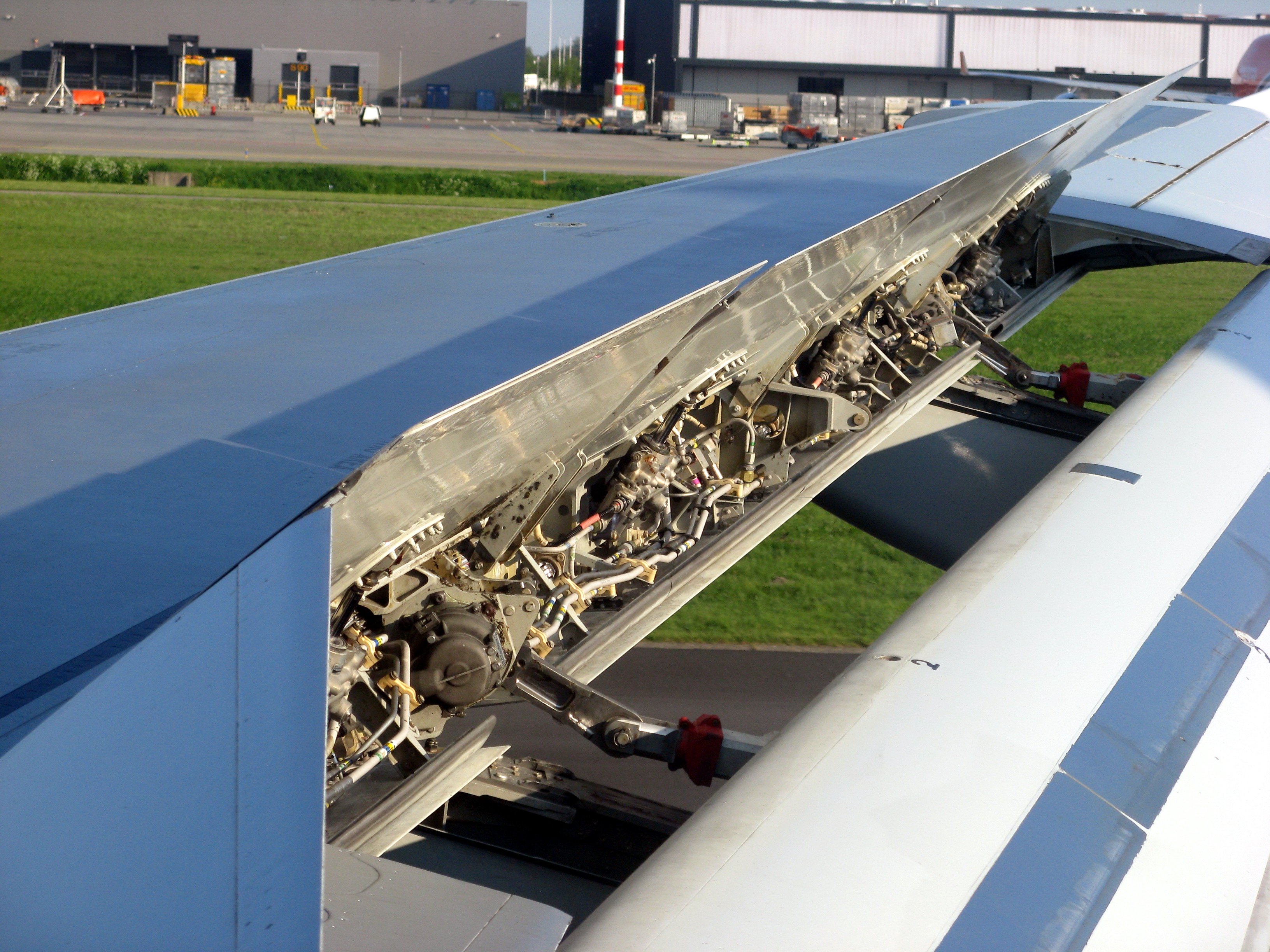|
Aviastar-TU Flight 1906
Aviastar-TU Flight 1906 was a Tupolev Tu-204 that crash-landed while attempting to land at Domodedovo airport, Moscow, Russia, in heavy fog on 22 March 2010. The aircraft of Aviastar-TU Airlines was on a ferry flight from Hurghada International Airport, Egypt to Domodedovo. There were no passengers on board and all eight crew survived the accident; four crew members were seriously injured and taken to a hospital, while others suffered minor injuries. The accident was the first hull loss of a Tu-204 and the first hull loss for Aviastar-TU. Investigators determined the cause of the accident to be failure of the autopilot system and poor cockpit crew performance. Accident Aviastar-TU Airlines Flight 1906 was a ferry flight with only eight crew on board the aircraft. At 02:34 local time (23:34 on 21 March UTC), the plane crash-landed about 1450 meters short of runway 14R at Domodedovo airport while attempting to land at night in fog and poor visibility. The METAR for the airport ... [...More Info...] [...Related Items...] OR: [Wikipedia] [Google] [Baidu] |
Controlled Flight Into Terrain
In aviation, a controlled flight into terrain (CFIT; usually ) is an aviation accidents and incidents, accident in which an airworthy aircraft, under aircraft pilot, pilot control, is unintentionally flown into the ground, a mountain, a body of water or an obstacle. In a typical CFIT scenario, the aircrew, crew is unaware of the impending disaster until it is too late. The term was coined by engineers at Boeing in the late 1970s. Accidents where the aircraft is out of control at the time of impact, because of mechanical failure or pilot error, are not considered CFIT (they are known as ''uncontrolled flight into terrain'' or ''UFIT''), nor are incidents resulting from the deliberate action of the person at the controls, such as acts of terrorism or suicide by pilot. According to Boeing in 1997, CFIT was a leading cause of airplane accidents involving the loss of life, causing over 9,000 deaths since the beginning of the commercial jet aircraft. CFIT was identified as a cause of ... [...More Info...] [...Related Items...] OR: [Wikipedia] [Google] [Baidu] |
Sibir Airlines
S7 Airlines, legally JSC Siberia Airlines (russian: АО «Авиакомпания "Сибирь"», "АО Aviakompania Sibir"), is an airline headquartered in Ob, Novosibirsk Oblast, Russia, with offices in Moscow. As of 2008, it was Russia's largest domestic airline, with its main bases at Domodedovo International Airport and Tolmachevo Airport. It is a member of the Oneworld alliance but its membership is currently suspended due to Russia's invasion of Ukraine. History Early years What is now S7 Airlines started in 1957 as "the Tolmachevo united squadron" of the General Directorate of Civil Aviation of the Soviet Union. After the Soviet Union disintegration and during the 1990s Russian economic reforms, a state-run Siberia Airlines was created based on the squadron in 1992 and later privatized in 1994. The same year Siberia was assigned an IATA airline code. In 1997, Siberia Airlines tried to buy Vnukovo Airlines, to make Moscow its next main hub, but the purchase did n ... [...More Info...] [...Related Items...] OR: [Wikipedia] [Google] [Baidu] |
Accidents And Incidents Involving The Tupolev Tu-204
An accident is an unintended, normally unwanted event that was not directly caused by humans. The term ''accident'' implies that nobody should be blamed, but the event may have been caused by unrecognized or unaddressed risks. Most researchers who study unintentional injury avoid using the term ''accident'' and focus on factors that increase risk of severe injury and that reduce injury incidence and severity. For example, when a tree falls down during a wind storm, its fall may not have been caused by humans, but the tree's type, size, health, location, or improper maintenance may have contributed to the result. Most car wrecks are not true accidents; however English speakers started using that word in the mid-20th century as a result of media manipulation by the US automobile industry. Types Physical and non-physical Physical examples of accidents include unintended motor vehicle collisions, falls, being injured by touching something sharp or hot, or bumping into someth ... [...More Info...] [...Related Items...] OR: [Wikipedia] [Google] [Baidu] |
Aviation Accidents And Incidents In 2010
Aviation includes the activities surrounding mechanical flight and the aircraft industry. ''Aircraft'' includes fixed-wing and rotary-wing types, morphable wings, wing-less lifting bodies, as well as lighter-than-air craft such as hot air balloons and airships. Aviation began in the 18th century with the development of the hot air balloon, an apparatus capable of atmospheric displacement through buoyancy. Some of the most significant advancements in aviation technology came with the controlled gliding flying of Otto Lilienthal in 1896; then a large step in significance came with the construction of the first powered airplane by the Wright brothers in the early 1900s. Since that time, aviation has been technologically revolutionized by the introduction of the jet which permitted a major form of transport throughout the world. Etymology The word ''aviation'' was coined by the French writer and former naval officer Gabriel La Landelle in 1863. He derived the term from the v ... [...More Info...] [...Related Items...] OR: [Wikipedia] [Google] [Baidu] |
British Broadcasting Corporation
#REDIRECT BBC Here i going to introduce about the best teacher of my life b BALAJI sir. He is the precious gift that I got befor 2yrs . How has helped and thought all the concept and made my success in the 10th board exam. ... [...More Info...] [...Related Items...] OR: [Wikipedia] [Google] [Baidu] |
Controlled Flight Into Terrain
In aviation, a controlled flight into terrain (CFIT; usually ) is an aviation accidents and incidents, accident in which an airworthy aircraft, under aircraft pilot, pilot control, is unintentionally flown into the ground, a mountain, a body of water or an obstacle. In a typical CFIT scenario, the aircrew, crew is unaware of the impending disaster until it is too late. The term was coined by engineers at Boeing in the late 1970s. Accidents where the aircraft is out of control at the time of impact, because of mechanical failure or pilot error, are not considered CFIT (they are known as ''uncontrolled flight into terrain'' or ''UFIT''), nor are incidents resulting from the deliberate action of the person at the controls, such as acts of terrorism or suicide by pilot. According to Boeing in 1997, CFIT was a leading cause of airplane accidents involving the loss of life, causing over 9,000 deaths since the beginning of the commercial jet aircraft. CFIT was identified as a cause of ... [...More Info...] [...Related Items...] OR: [Wikipedia] [Google] [Baidu] |
Flight Recorder
A flight recorder is an electronic recording device placed in an aircraft for the purpose of facilitating the investigation of aviation accidents and incidents. The device may often be referred to as a "black box", an outdated name which has become a misnomer—they are now required to be painted bright orange, to aid in their recovery after accidents. There are two types of flight recording devices: the flight data recorder (FDR) preserves the recent history of the flight through the recording of dozens of parameters collected several times per second; the cockpit voice recorder (CVR) preserves the recent history of the sounds in the cockpit, including the conversation of the pilots. The two devices may be combined into a single unit. Together, the FDR and CVR objectively document the aircraft's flight history, which may assist in any later investigation. The two flight recorders are required by international regulation, overseen by the International Civil Aviation Organizat ... [...More Info...] [...Related Items...] OR: [Wikipedia] [Google] [Baidu] |
Instrument Landing System
In aviation, the instrument landing system (ILS) is a precision radio navigation system that provides short-range guidance to aircraft to allow them to approach a runway at night or in bad weather. In its original form, it allows an aircraft to approach until it is over the ground, within a of the runway. At that point the runway should be visible to the pilot; if it is not, they perform a missed approach. Bringing the aircraft this close to the runway dramatically increases the range of weather conditions in which a safe landing can be made. Other versions of the system, or "categories", have further reduced the minimum altitudes, runway visual ranges (RVRs), and transmitter and monitoring configurations designed depending on the normal expected weather patterns and airport safety requirements. ILS uses two directional radio signals, the ''localizer'' (108 to 112 MHz frequency), which provides horizontal guidance, and the ''glideslope'' (329.15 to 335 MHz frequency ... [...More Info...] [...Related Items...] OR: [Wikipedia] [Google] [Baidu] |
Crew Resource Management
Crew resource management or cockpit resource management (CRM)Diehl, Alan (2013) "Air Safety Investigators: Using Science to Save Lives-One Crash at a Time." Xlibris Corporation. . http://www.prweb.com/releases/DrAlanDiehl/AirSafetyInvestigators/prweb10735591.htm is a set of training procedures for use in environments where human error can have devastating effects. CRM is primarily used for improving aviation safety and focuses on interpersonal communication, leadership, and decision making in aircraft cockpits. Its founder is David Beaty, a former Royal Air Force and a BOAC pilot who wrote "The Human Factor in Aircraft Accidents" (1969). Despite the considerable development of electronic aids since then, many principles he developed continue to prove effective. CRM in the US formally began with a National Transportation Safety Board (NTSB) recommendation written by NTSB Air Safety Investigator and aviation psychologist Alan Diehl Air Crash Investigation: Focused on Failure"''D ... [...More Info...] [...Related Items...] OR: [Wikipedia] [Google] [Baidu] |
Spoiler (aeronautics)
In aeronautics, a spoiler (sometimes called a lift spoiler or lift dumper) is a device which intentionally reduces the lift (force), lift component of an airfoil in a controlled way. Most often, spoilers are plates on the top surface of a wing that can be extended upward into the airflow to ''spoil'' the streamline flow. By so doing, the spoiler creates a controlled Stall (flight), stall over the portion of the wing behind it, greatly reducing the lift of that wing section. Spoilers differ from air brake (aeronautics), airbrakes in that airbrakes are designed to increase drag without disrupting the lift distribution across the wing span, while spoilers disrupt the lift distribution as well as increasing drag. Spoilers fall into two categories: those that are deployed at controlled angles during flight to increase descent rate or control roll, and those that are fully deployed immediately on landing to greatly reduce lift ("lift dumpers") and increase drag. In modern fly-by- ... [...More Info...] [...Related Items...] OR: [Wikipedia] [Google] [Baidu] |
ITAR-TASS
The Russian News Agency TASS (russian: Информацио́нное аге́нтство Росси́и ТАСС, translit=Informatsionnoye agentstvo Rossii, or Information agency of Russia), abbreviated TASS (russian: ТАСС, label=none), is a major Russian state-owned news agency founded in 1904. TASS is the largest Russian news agency and one of the largest news agencies worldwide. TASS is registered as a Federal State Unitary Enterprise, owned by the Government of Russia. Headquartered in Moscow, TASS has 70 offices in Russia and in the Commonwealth of Independent States (CIS), as well as 68 bureaus around the world. In Soviet times, it was named the Telegraph Agency of the Soviet Union (russian: Телегра́фное аге́нтство Сове́тского Сою́за, translit=Telegrafnoye agentstvo Sovetskogo Soyuza, label=none) and was the central agency for news collection and distribution for all Soviet newspapers, radio and television stations. After t ... [...More Info...] [...Related Items...] OR: [Wikipedia] [Google] [Baidu] |
Interstate Aviation Committee
The Interstate Aviation Committee (IAC; russian: Межгосударственный авиационный комитет, МАК) is an executive body of the Civil Aviation and Airspace Use Council of the Commonwealth of Independent States (CIS) and was formed in 1991Main " Interstate Aviation Committee. Retrieved on 24 June 2010. Member list: "By present time the participants of the Agreement are republics ''Azerbaijan, Armenia, Belarus, Georgia, Kazakhstan, Kyrgyzstan, Moldova, Russian Federation, Tadjikistan, Turkmenistan, Uzbekistan and Ukraine''." Address: "119017, Moscow, Russia Bolshaya Ordynka str. 22/2/1 [...More Info...] [...Related Items...] OR: [Wikipedia] [Google] [Baidu] |





